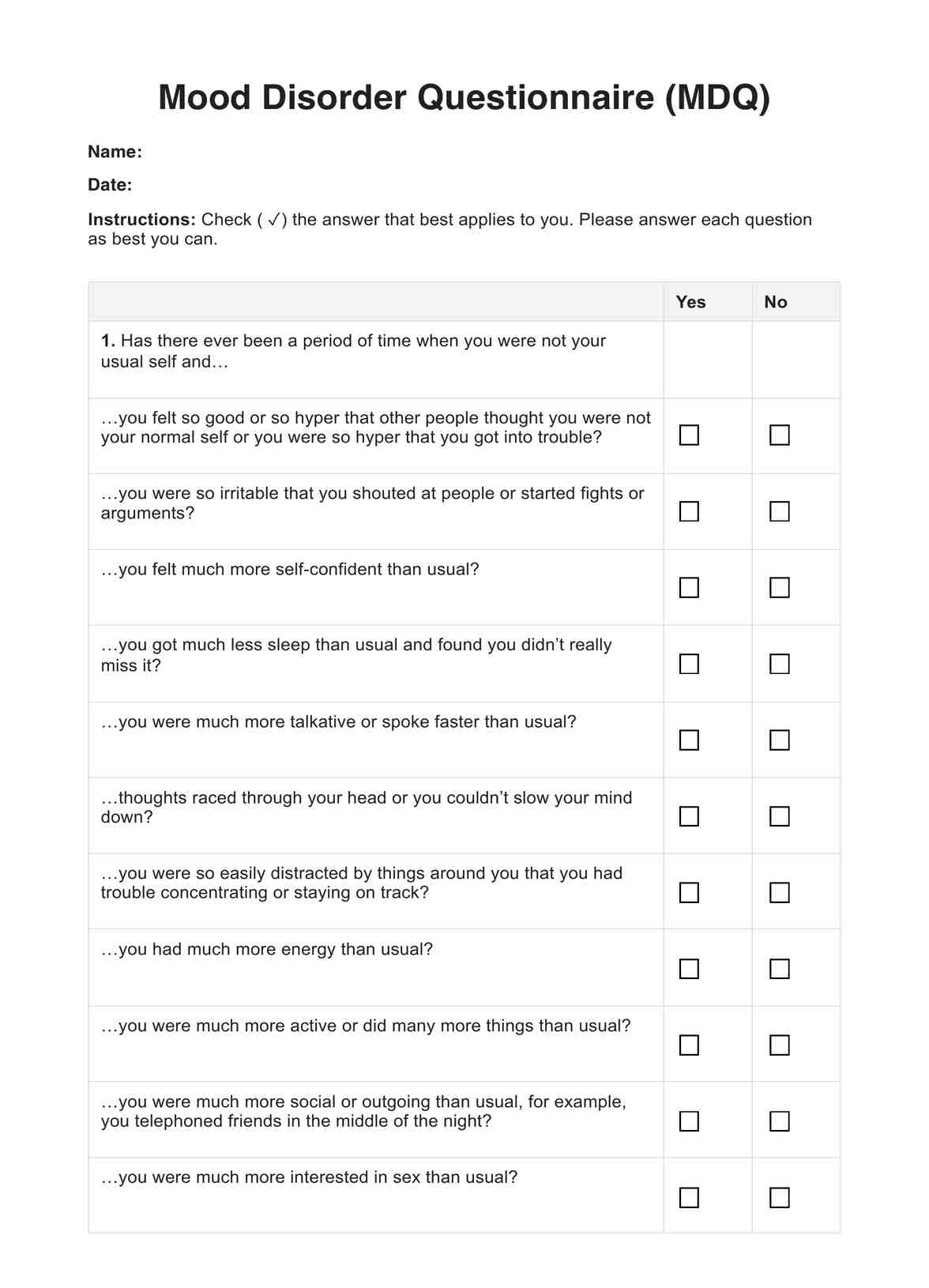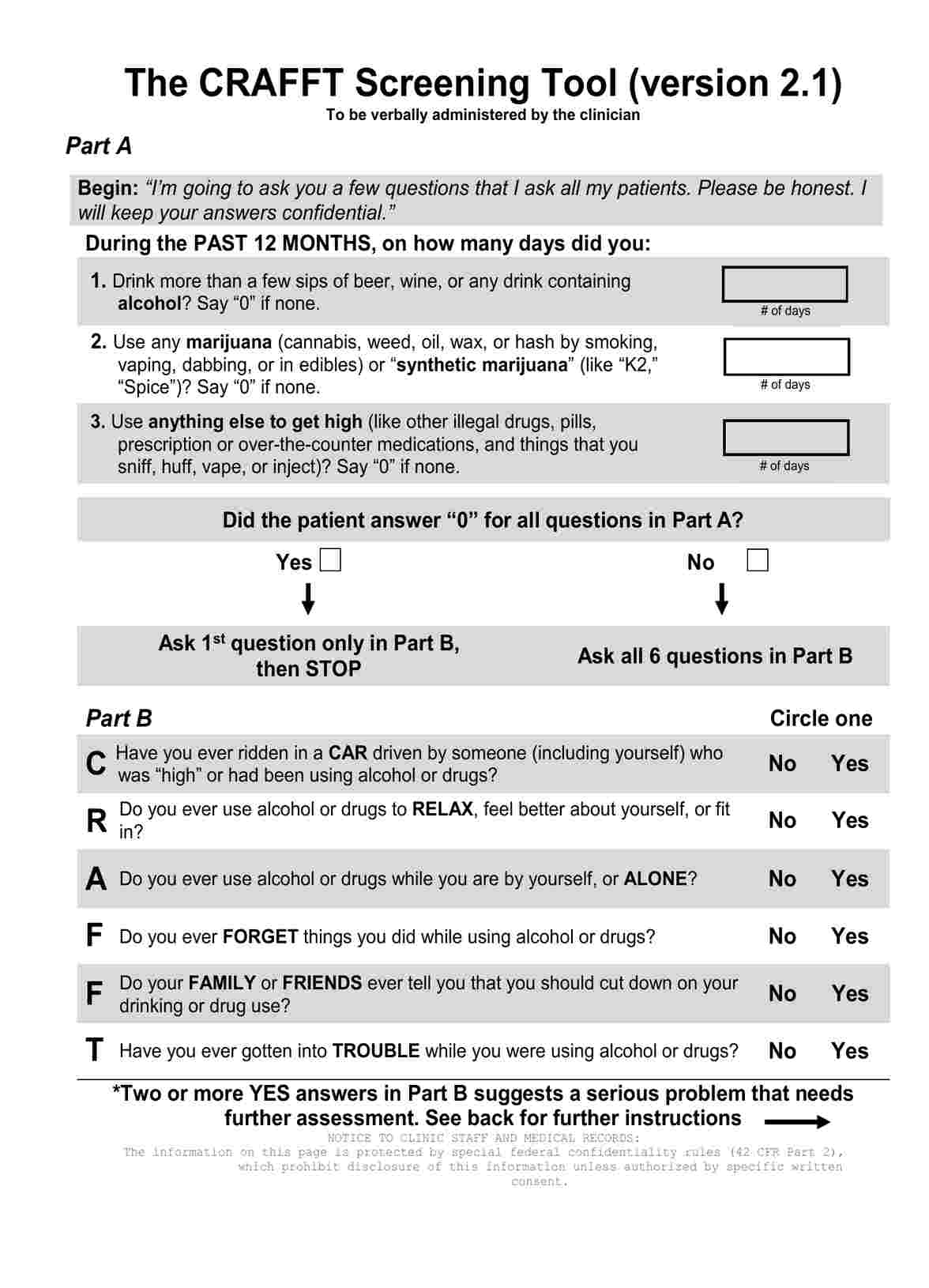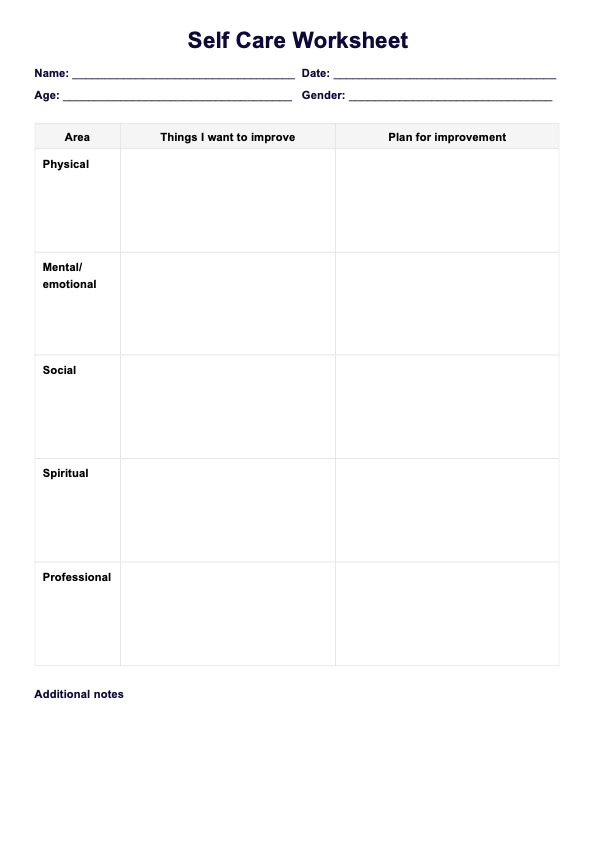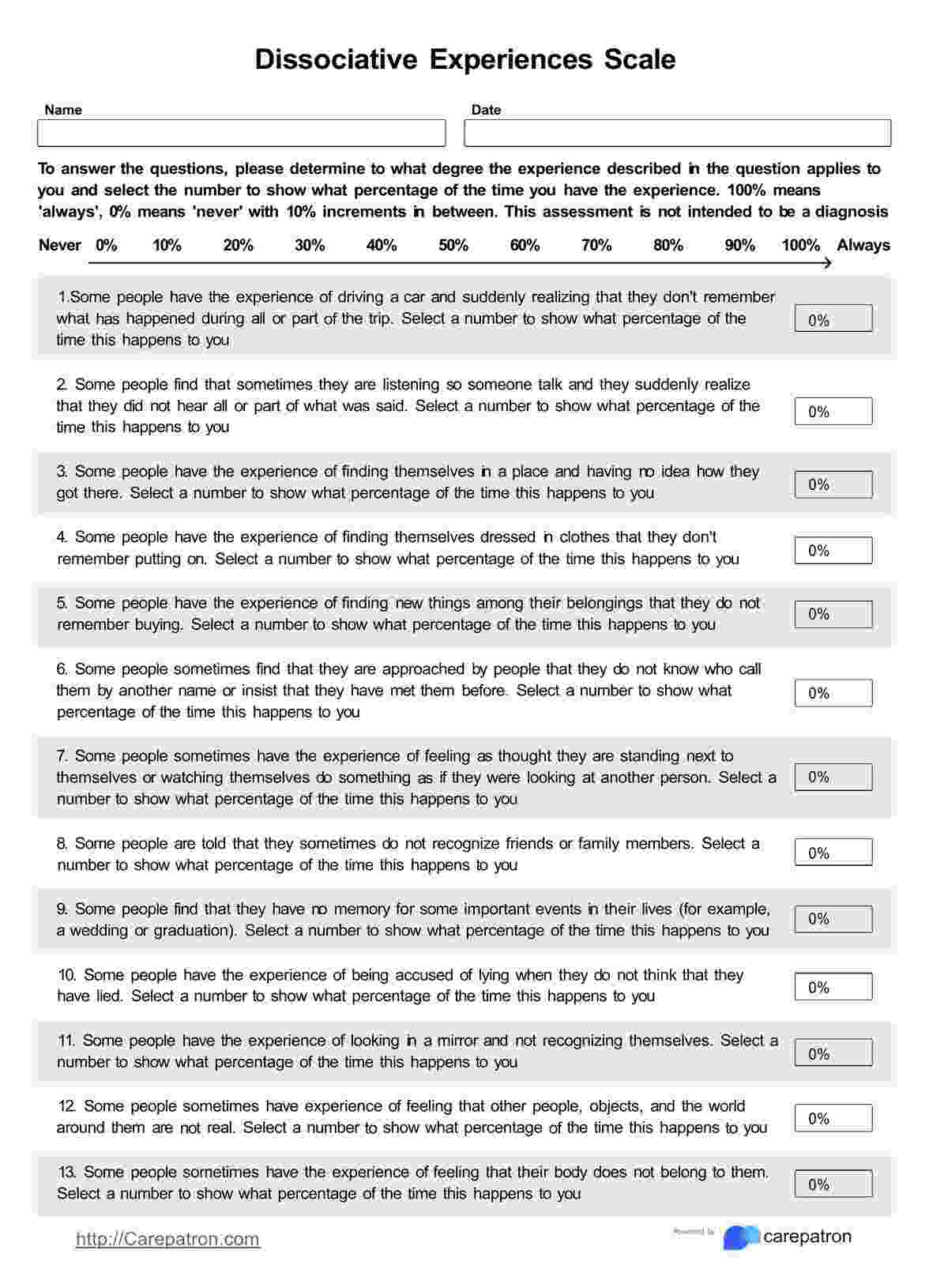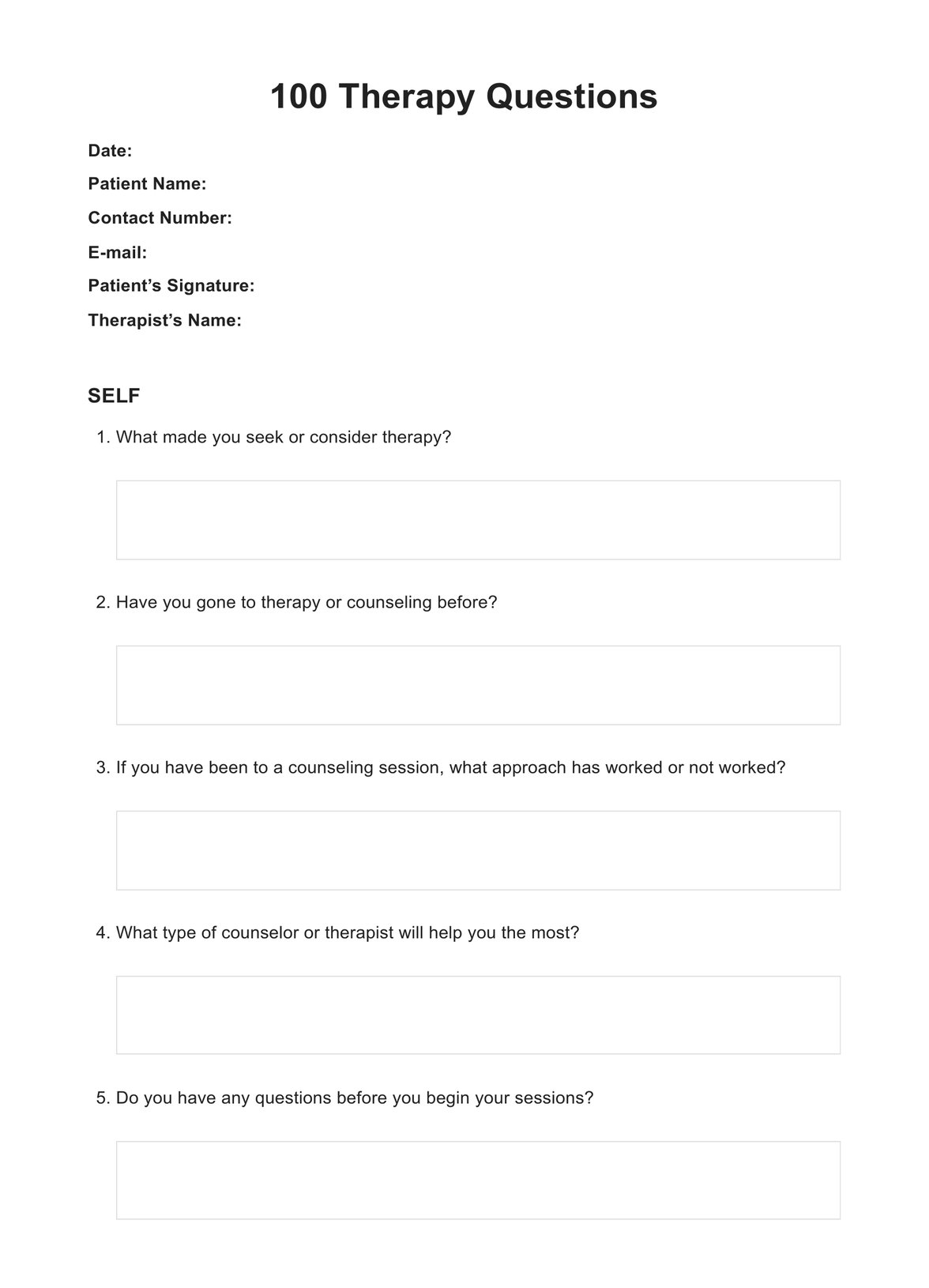Beck’s Anxiety Inventory
Use Beck’s Anxiety Inventory to gauge the severity of your patient’s anxiety and develop appropriate treatment strategies.


What is anxiety?
Before we discuss what Beck’s Anxiety Inventory is and how it’s used, let’s briefly discuss what it aims to gauge: anxiety.
Anxiety is a kind of emotion characterized by fear and uneasiness, sometimes to an extreme degree (this varies from person to person). Everyone experiences this emotion now and then, all the more when facing complex problems or dealing with uncomfortable situations, especially the kind that might affect our lives. Examples of such problems/situations include work evaluations, school exams, making significant life decisions, and being worried for someone’s safety.
If a person experiences to an extreme degree and they experience it constantly, they might have an anxiety disorder, a type of mental health condition that disrupts their daily life. An anxiety disorder can affect people to the point that they cannot follow their routines or function. Some people might “overreact” to anything that triggers their emotions, while some panic so much that they can’t control their responses to their triggers.
Those who have anxiety or anxiety disorders can exhibit any number of the following symptoms, some physical, some mental, and some behavioral:
- They excessively sweat or sweat out of the blue.
- Their heartbeats become rapid, and they might start palpitating.
- They feel nauseated and may develop tension migraines.
- Their anxiety might trigger panic attacks.
- Their muscles become tense.
- They become restless and might lose sleep.
- Intrusive thoughts will sometimes bombard them.
If you have patients who have anxiety symptoms or are confirmed to have anxiety, you can use several assessments to gauge the severity of their anxiety, one of which is Beck’s Anxiety Inventory.
Beck’s Anxiety Inventory Template
Beck’s Anxiety Inventory Example
How to use Beck’s Anxiety Inventory:
Beck’s Anxiety Inventory is a nifty tool that you can use to check how severe your patient’s anxiety level is. This assessment comes in the form of a checklist of the most common symptoms of anxiety:
- Numbness or tingling
- Feeling hot
- Wobbliness in legs
- Unable to relax
- Fear of the worst happening
- Dizzy or lightheaded
- Heart pounding/racing
- Unsteady
- Terrified or afraid
- Nervous
- Feeling of choking
- Hands trembling
- Shaky/unsteady
- Fear of losing control
- Difficulty in breathing
- Fear of dying
- Scared
- Indigestion
- Faint/lightheaded
- Face flushed
- Hot/cold sweats
All that needs to be done is to have your patient answer the checklist. They can do so by rating themselves using one of four preset answers per item:
- Not at all = 0 points
- Mildly, but it didn’t bother me much = 1 point
- Moderately - it wasn’t pleasant at times = 2 points
- Severely – it bothered me a lot = 3 points
The prompt for these preset answers is that the patient should select the one that best applies to them based on how much each item has bothered them in the past month, including the minutes or hours before answering the checklist.
To interpret the scores, you simply need to refer to the following ranges and designations:
- 0 to 21 = low anxiety
- 22 to 35 = moderate anxiety
- 36+ = concerning/severe levels of anxiety
When is it best to use Beck’s Anxiety Inventory?
The best time to use Beck’s Anxiety Inventory is when a patient presents for an appointment with you to discuss their anxiety (or the possibility of having it). Before you whip out a copy of the inventory, it’s always best to introduce the assessment to them first because they have the right to know what it is and what it’s for. If they consent to being assessed using Beck’s Anxiety Inventory, then that’s your cue to use it.
Do note that you should not consider this the sole assessment to make an official diagnosis, just in case your patient scores high. It’s best to use other assessments that gauge anxiety symptoms to cover as much ground as possible. Specific physical conditions and problems can cause anxiety, so it’s best to check your patient for hyperthyroidism, alcohol/drug dependence and withdrawal, respiratory disorders, and diabetes.
You must also keep a copy of the latest edition of The Diagnostic and Statistical Manual of Mental Disorders. After conducting all the necessary tests, you must cross-check all your findings with the manual’s criteria for anxiety. If enough information matches the requirements, you can make an official diagnosis for your patient.
What are the benefits of using Beck’s Anxiety Inventory?
It has standardized criteria for assessing patients.
The great thing about Beck’s Anxiety Inventory and assessments, in general, is that they have standardized criteria for assessing patients. They often come with point designations for preset answers, and there are score ranges plus designations to refer to when it comes to gauging the severity level of symptoms. With these, healthcare professionals don’t have to worry about how to interpret findings.
It can help guide treatment decisions for anxiety.
Beck’s Anxiety Inventory lists several anxiety symptoms, and the patient must rate each. Healthcare professionals will see which symptoms are the most prominent, and knowing which ones are prominent can help them identify key areas of concern. Once an official diagnosis is made, healthcare professionals can develop a treatment plan that considers which symptoms are the most severe, and they can build their plan around them.
It can be used as a monitoring tool.
Now, let’s stipulate that you have officially diagnosed a patient with anxiety disorder, implemented a treatment plan, and your patient has been following the plan for a while now. It’s only natural for you to wonder if your plan is working if your patient is getting better, and if they can manage their anxiety better than before.
You can schedule routine check-ups where you have them answer Beck’s Anxiety Inventory again. If the scores are lower than the first time they answered the scale, especially if their ratings for specific symptoms are lower, then you can safely say that your plan is working and your patient is improving. If the scores are still high, perhaps give your patient more time to follow the plan or make some changes and see if those changes do the trick.
Commonly asked questions
It shouldn’t take more than five minutes, but if your patient wants to take their time to think about their answers, let them.
No. On the part of the patient, they simply need to pick an answer from a preset selection. On the part of the healthcare professional, they just need to add up the scores and write down any notes in the Additional Comments box.
No. It’s a screening tool included in the anxiety diagnostic process. As we mentioned earlier, the results of this inventory should not be the sole basis for a diagnosis. Using other assessments, covering as much ground as possible is best.


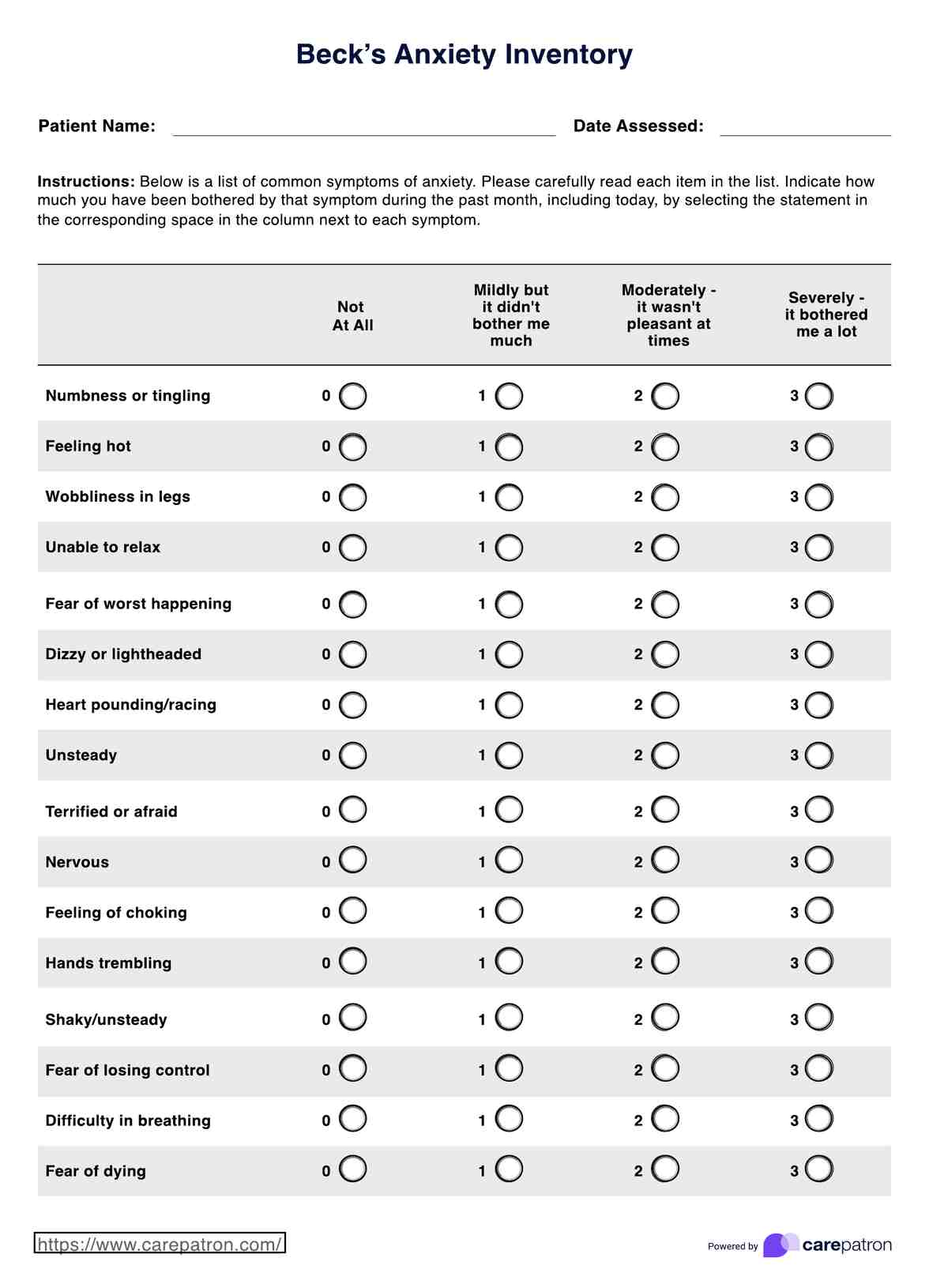
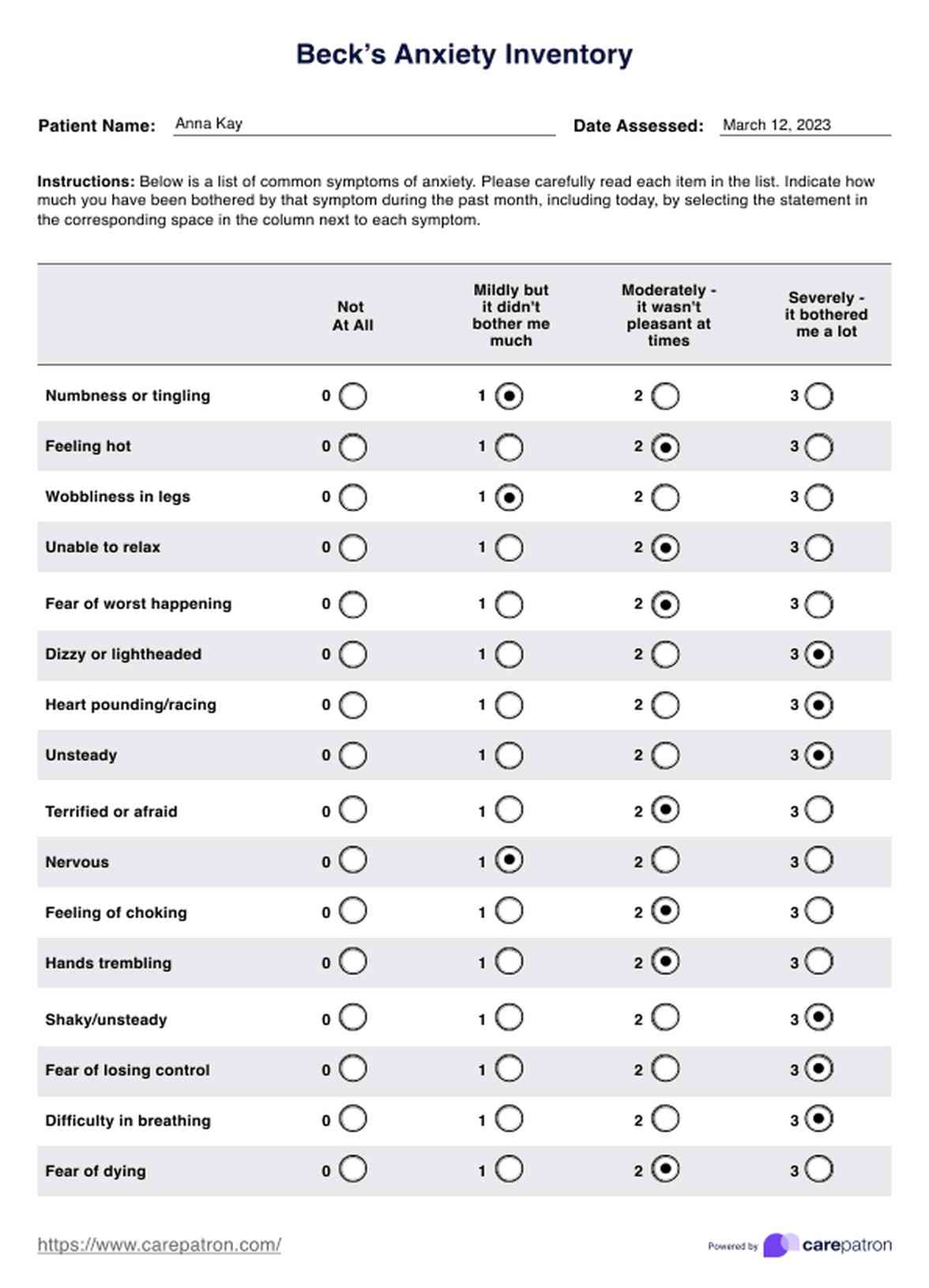

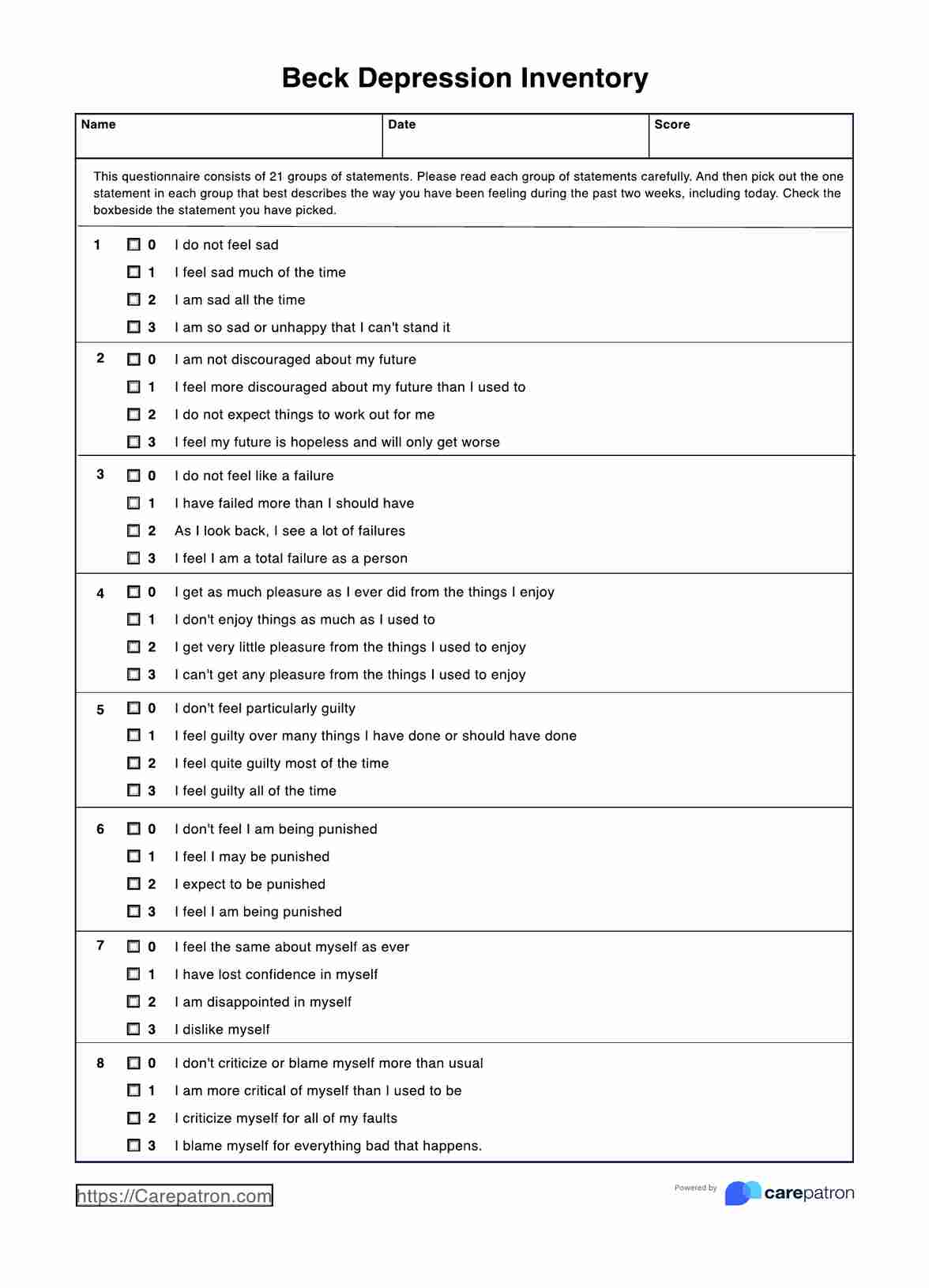













-template.jpg)





























































































